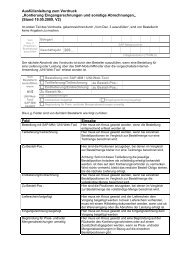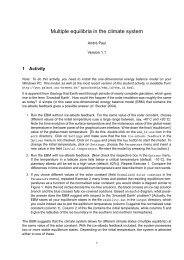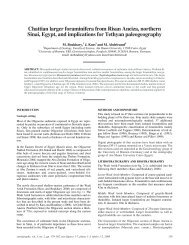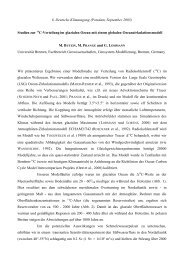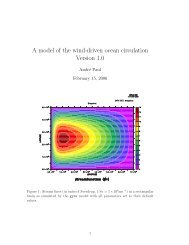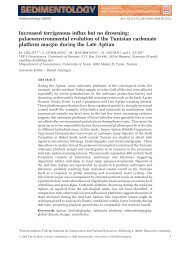Forschung im HLRN-Verbund 2011
Forschung im HLRN-Verbund 2011
Forschung im HLRN-Verbund 2011
- Keine Tags gefunden...
Erfolgreiche ePaper selbst erstellen
Machen Sie aus Ihren PDF Publikationen ein blätterbares Flipbook mit unserer einzigartigen Google optimierten e-Paper Software.
211✬✩...............✫✪Figure 1: The picture illustrates a branch-and-bound search tree and shows the possibility of distributing it. Eachroot node (except the white one) corresponds to a leaf in one of the other search trees. This is indicatedby the colors. Search nodes with the same color are equivalent problems. The subproblems correspondingto colored leaves are distributed to a different processor for solving. This picture already indicates thatby using such a distributed approach much more search nodes can be processed. This results in the factthat big instances can be solved within a reasonable t<strong>im</strong>e frame.via log files) for these instances will give more insightand help to understand the structure of thesolved problems in much more detail.The results of this project will lead to the developmentof new methods to solve s<strong>im</strong>ilar problemsmore efficiently. The achievements withinthis project will st<strong>im</strong>ulate research in that researcharea. It will give the proof that a computational environmentsuch as the <strong>HLRN</strong> is efficiently usableto solve real-world instances, which is not possiblewith standard desktops or PC clusters. This willbe recognized by researchers and industry and willlead to a demand for such environments.Using our <strong>im</strong>plementation of a parallel mixed integerprogramming solver, called ParaSCIP [4], wewere able to solve two open instances of the MIP-LIB, namely, ds (a problem from public transportservice planning) andstp3d (a VLSI routing problem)to opt<strong>im</strong>ality, which have 67 732 and 204 880decision variables, respectively.It took approx<strong>im</strong>ately 86 hours to solve ds and114 hours to solve stp3d, using up to 2048 cores.The opt<strong>im</strong>al values, are 93.52 fords and 493.71965for stp3d. This means we found a feasible solutionwith the corresponding values and provedthat there exists no feasible solution with a smallervalue (both instances have an objective functionwhich has to be min<strong>im</strong>ized).More Information1. T. Achterberg, T. Koch, and A. Martin, MI-PLIB2003, Operations Research Letters, 34:4(2006) 361–372.2. R. E. Bixby, Solving Real-World Linear Programs:A Decade and More of Progress, Operations.Research, 50 (2002) 3–15.3. R. E. Bixby, M. Fenelon, Z. Gu, E. Rothberg,and R. Wunderling, MIP: Theory and Practice –Closing the Gap, In: System Modelling and Opt<strong>im</strong>ization:Methods, Theory and Applications,(2000).4. Y. Shinano, T. Achterberg, T. Berthold, S. Heinz,and T. Koch, ParaSCIP – a parallel extension ofSCIP, ZIB-Report 10-27, (2010) Zuse InstituteBerlin.FundingIBM; Zuse Institute Berlin; The project is funded atthe <strong>HLRN</strong> with up to 7680 CPU cores over a t<strong>im</strong>ehorizon of more than 72 hours.Methodenentwicklung



